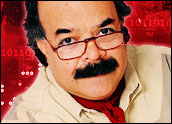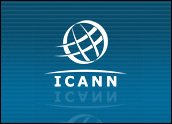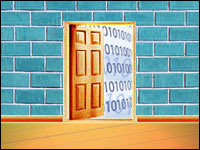
During the early dawn of mainframe computers, everyone was in data processing, and most corporations thought that without the word “data” in their corporate naming lingo, they would simply die. Therefore, millions of business names like “Data-This” and “Data-That” came about.
All companies, big or small, struggled with their corporate branding in a thick jungle of mass confusion, as they all wanted to acquire data so they could do some processing; from the lower floors of HR to the highest executive floors, all the way to the CEO, the “D word” was the most comforting.
As long as you were confusingly busy with data, you were OK. The larger the data, the better the task. Finally, a time came when the winds shifted and data processing lost its meaning, power and charm, and slowly disappeared and almost became obscene.
Then suddenly, with the invention of micro, corporate thinking shrank too, resulting in millions of businesses who simply called themselves “Micro-This” and “Micro-That.” Every conceivable micro-based variation was used, and this term dominated the business scene for the following decade.
Weird Naming
Microsoft is the brilliant survivor from that period. Recently, with the dot-com boom and bust, where there were no corporate nomenclature rules to be broken because they simply never existed, a free fall of weird naming took the globe by surprise. Dumber and dumber names ruled the boardrooms.
All around the globe, there were more than 10,000 extremely expensive, silly name announcements, and almost all of them failed. That frenzy has simmered down, and now it is humming around information technology or “IT.” It seems we are all in IT. Everything we do is IT. IT, is it? So, why the fuss?
When in the course of human endeavor we come across a road sign pointing nowhere except to the sky, then we should quickly realize the limits of our mental reach. It’s time to come back to earth for a reality check.
When a great new technology covers the entire spectrum and turns into a common business word, then the obvious question is how to recognize all the other undercurrent evolutions and all new supplemental innovations.
Generic Technological Terms
Why not call the entire process of life just one generic term? We don’t say, “I’m basically into opulent consumption and making babies.” Rather, “I’m just a metro-sexual, upgrading my condo, dining out at Schwartz and have a great date for tonight.”
The generic technological terms, originating from an innovative buzz in technologically driven businesses, are often sexy, like the sci-fi term “hardware.” After a while, like anything else, these words age, becoming dull and boring and eventually create negative vibes for being too old-fashioned. This dramatically slows down the commercialization of new ideas under such terms.
In reality, IT is still the same old data processing, now using new mediums, new methods and innovations. The negative press and big-time general technology slowdown has wrapped the term “IT” into a morbid thing and created a feeling of overall rejection.
HR is fed up with millions of fancy resumes from very bright people clinging to the IT mantra. While shareholders, VCs, bankers and media all are giving IT a shut out, in reality they are only shutting out the two letters “I” and “T.” After all, many of those wouldn’t know how to spell the great technical innovations and the revolution going on at this very second without these two important letters.
IT-This, IT-That
Just the same way, the brilliant techies and the smart engineers in “IT” have no other name to call their new gizmos; after all, they invented the great revolutionary buzz terms “hardware” and “software.”
Incidentally, that took almost a quarter century before grandmothers were able to figure that hardware is like the dishwasher and the software is the detergent. Now you know why there are still so many soap bubbles around their PCs. We are now stuck in the mud again with IT-This and IT-That. The most we can do is talk about wireless or telephony — other old, last-century terms. Today we are at the most productive and streamlined age of e-commerce, yet the term IT seems to dampen the issues and commercialization of upcoming innovations.
We find brilliance in both the engineers behind the technology and the marketers who roll it out, but they both are at extreme odds when it comes to finding proper terms and names to sell the ideas to shareholders and the general public.
Technology marketing requires better product naming and sharper corporate branding, all in such a way that their name doesn’t get stuck in an umbrella connotation in the likes of data processing. Create a custom corporate identity and stay clear of short-term product branding based on trendy fads.
Corporate naming and branding teaches us new lessons as we go forward. The naming of major technologies must change in time, otherwise old perceptions will hurt the swift commercialization of new ideas. So who decides when the time has come to stop using data, micro or IT? Of course, it’s you. Only you. I’m just word processing.
Naseem Javed, author Naming for Power and also Domain Wars, is recognized as a world authority on global name identities and domain issues. Javed founded ABC Namebank, a consultancy he established a quarter century ago, and conducts executive workshops on image and name identity issues. Contact him at [email protected].





















































Social Media
See all Social Media